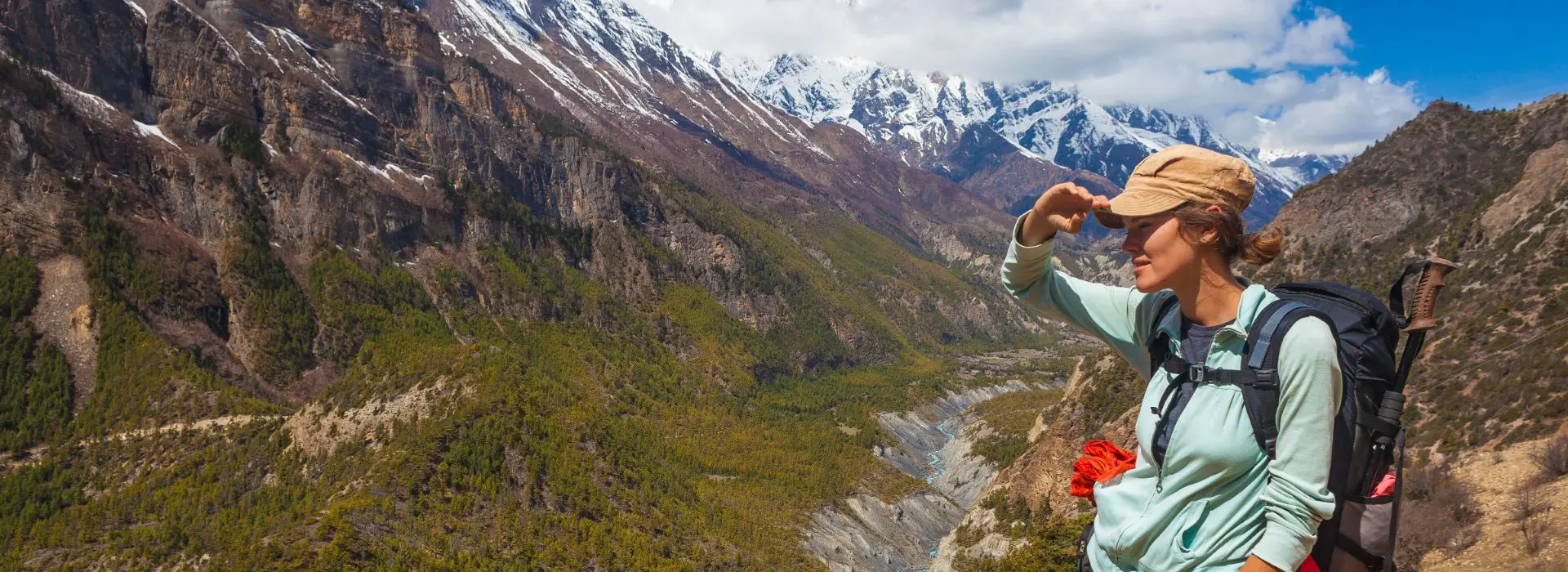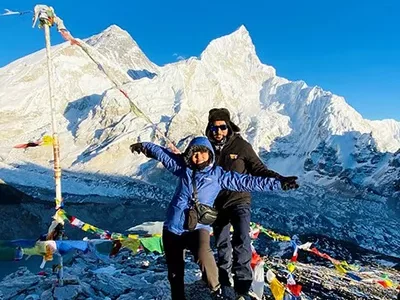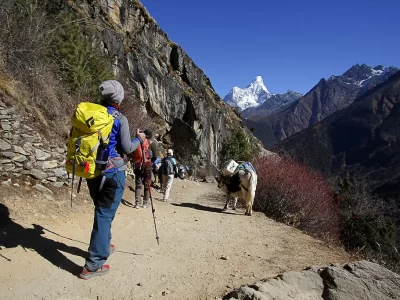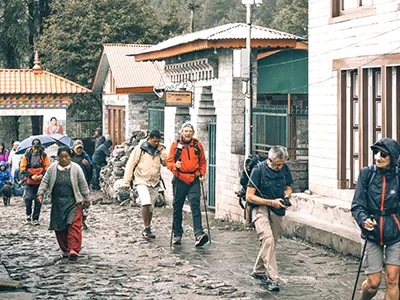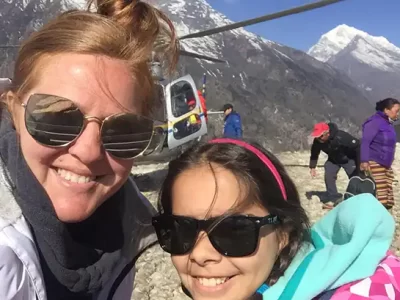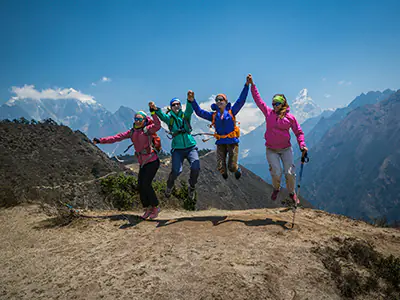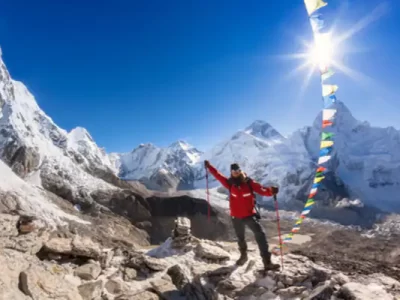Trekkers worldwide are drawn to Everest Base Camp (EBC) as it is considered the ultimate adventure destination that puts on show the best of nature. As a result, thousands of people travel here annually and, as a consequence, convert difficult journeys into significant personal experiences at the base of the tallest mountain, Everest. Anyone who is up for this kind of adventure will have to learn how to plan Everest Base Camp Trek.
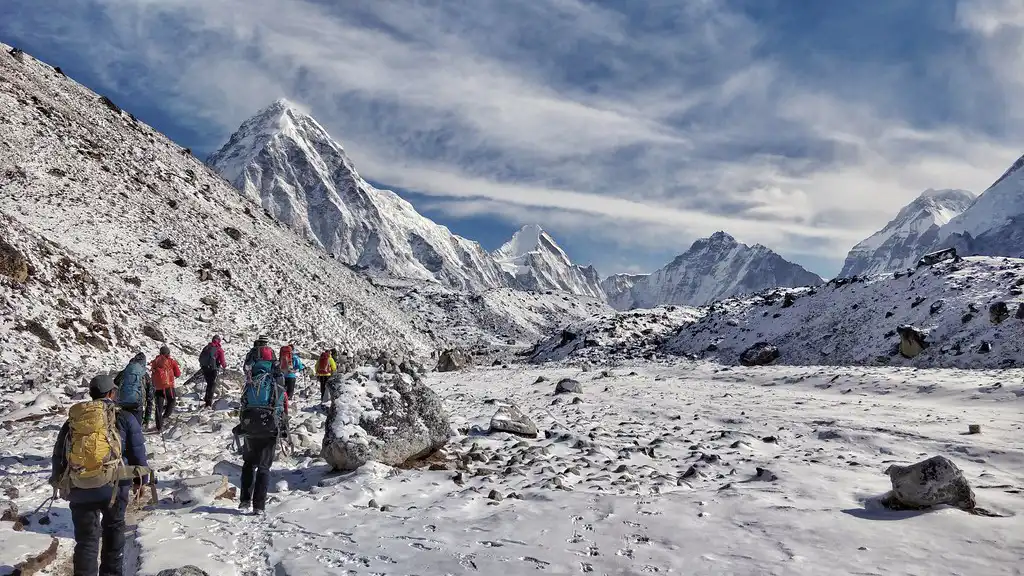
Trekking in the Himalayan heartland will be safe, fun, and memorable if you conduct thorough planning. For a successful EBC trek, it is important to take several key preparation steps into account. Any trip needs to have even minor things, regardless of whether they are physical or not, for they determine how successful the trip will be.
It can involve understanding the trek’s physical demands, acclimatizing correctly to high altitudes, and securing the necessary gear and supplies when preparing for Everest Base Camp. In order to prepare yourself for the Everest Base Camp Trekking, you need to scrutinize your physical fitness level and plan your route very well. It is a process that requires close attention to detail and a lot of thought on how well-prepared you are physically and mentally.
Everest Base Camp Trek
Everest Base Camp Short Trek
Luxury Everest Base Camp Trek
Best Time to Trek Everest Base Camp
Spring (March to May)
During spring, Everest Base Camp undergoes a dramatic transformation. Melting snow reveals trails decorated with blooming rhododendrons and various wildflowers, which inject vibrant colors into the trek. This season captivates botany enthusiasts and provides warm temperatures for comfortable trekking. Furthermore, the clear skies of these months enhance visibility, enabling trekkers and photographers to capture the Himalayan peaks in their most spectacular form.
In spring, the weather generally remains stable, but it can change suddenly, bringing unexpected snowfalls. Such conditions often require helicopter rescues to ensure the safety of trekkers. Nevertheless, these challenges do not deter the large numbers of adventurers that flock to Everest Base Camp during this peak season. The combination of favorable weather and the natural beauty of the blooming landscape draws a diverse crowd, from experienced climbers to novices, all keen to witness the grandeur of Everest in the vibrant spring.
Autumn (September to November)
Autumn heralds another prime trekking season at Everest Base Camp, characterized by its stable and reliable climate. Following the monsoon season, the air turns crisp and clear, enhancing visibility and providing breathtaking mountain views. Ideal trekking conditions prevail due to the clear skies and mild weather, marking this period as one of the best times to visit.
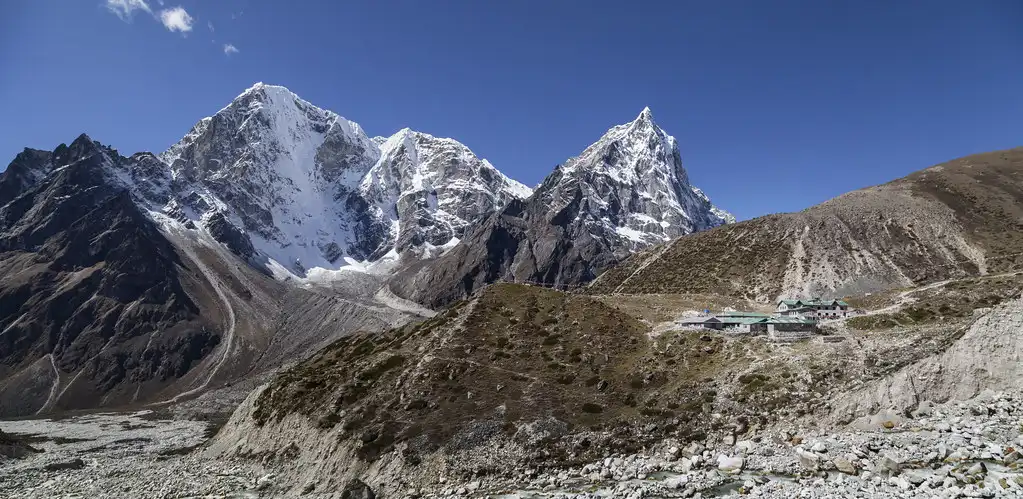
This season coincides with significant local festivals such as Dashain and Tihar, allowing trekkers to immerse themselves in the vibrant cultural festivities and experience the rich traditions of the local communities. Despite the general reliability of the weather, autumn may still bring sudden short-term changes, often necessitating helicopter evacuations. If you plan on going to high altitudes or just trekking, prepare yourself for such emergencies as they may come suddenly.
Poor weather conditions happen up and down the route throughout the months of post-monsoon, which in kind attracts many trekkers as would be expected during spring, making the whole trekking experience very thrilling! Nevertheless, unlike in high seasons, it is open, providing laidback trekking amid the fantastic natural landscapes characteristic of the Everest area.
Pre-Monsoon
As the pre-monsoon season unfolds, temperatures along the trails to Everest Base Camp rise, setting ideal conditions for trekking before the onset of the rainy season. The landscape comes alive with lush, vibrant greenery during this time, offering a distinct and rich display of natural beauty, unlike the more stark vistas of other seasons.
As the monsoon draws near, the clearing air improves visibility. It cools the environment, creating an appealing atmosphere for those seeking to explore the mountains without the extreme cold or crowded paths. With the approaching monsoon, however, comes unpredictable weather that can escalate the risk of landslides, increasing the necessity for emergency helicopter services.
Despite these challenges, the trails remain relatively uncrowded as fewer trekkers opt to begin their journey just before the monsoon hits. This scarcity of trekkers turns the pre-monsoon period into an ideal time for those looking for a more tranquil trekking experience, enhanced by the gentle and inviting weather that precedes the more intense rains.
Winter (December to February)
In winter, snowfall envelops the Everest Base Camp region, transforming it into a serene, white paradise and offering a unique and tranquil trekking experience. The season presents a magical spectacle, with snow-capped mountains rising majestically against crystal-clear blue skies.
The cold climate and challenging conditions create a quiet, untouched winter wonderland, perfect for those who cherish the stillness and stark beauty of nature at its most tranquil. However, winter also introduces significant challenges, such as the increased risk of heavy snowfalls and avalanches that make trekking more hazardous. These conditions frequently require helicopter rescues, which the adverse weather complicates.
Despite these dangers, the trails remain significantly less crowded, drawing those who seek a more solitary and introspective trekking experience. The sparse number of trekkers enhances the personal and meditative qualities of a journey through the Himalayas, particularly appealing to those desiring solitude and reflection amid the mountainous grandeur.
Everest Base Camp Trek Preparation
The Everest Base Camp Trek is an exhilarating experience, requiring thorough preparation for success. Peregrine Treks and Tours emphasizes the importance of complete preparation to navigate the Himalayan terrain safely and enjoyably. Here’s a detailed guide for effective Everest Base Camp trek preparation:
Focus on Physical Fitness: Develop stamina through a balanced exercise regimen that includes cardiovascular workouts, strength training, and hiking exercises, essential for the trek’s demands.
Acclimate to Altitude: Gradually adjust to high altitudes by planning shorter treks at elevated levels before tackling Everest Base Camp, ensuring your body acclimatizes properly.
Understand Altitude Sickness: Learn to recognize altitude sickness symptoms like headaches, nausea, and dizziness. Peregrine Treks and Tours guides monitor health and provide aid promptly.
Conduct Health Check-ups: Undergo comprehensive health screenings to address and manage any pre-existing conditions effectively during the trek.
Manage Nutrition and Hydration: Keep a balanced diet and ensure proper hydration to maintain energy and facilitate altitude adjustment.
Prepare Mentally: Build mental toughness to face the physical demands of the trek, enhancing your ability to overcome challenges.
Check Gear and Equipment: Select the right trekking gear, including durable boots and a reliable backpack, to ensure comfort and safety.
Please take a look at the Itinerary: Familiarize yourself with the trek’s schedule to facilitate gradual acclimatization and minimize altitude sickness risks.
Learn about Weather Patterns: Understand the Himalayan weather’s variability to prepare adequately and plan your trek wisely.
Ready for Emergencies: Keep a basic first aid kit and know its contents. Peregrine Treks and Tours offers emergency contact support for immediate assistance.
Carry Communication Devices: Ensure connectivity with mobile networks where available, and consider satellite phones or two-way radios for remote areas.
Organize Documentation and Permits: Peregrine Treks and Tours help in obtaining necessary permits like the Sagarmatha National Park Permit and Khumbu Pasang Lhamu Rural Municipality Entry Permit.
Respect Local Culture: Learn about and respect the customs of the region, enhancing interactions with local communities through our guides’ insights.
Practice Environmental Responsibility: Adhere to responsible trekking by minimizing waste and supporting conservation efforts in the Everest region.
Peregrine Treks and Tours commits to equipping you fully for the Everest Base Camp Trek, prioritizing your safety and enjoyment, and guiding you through the Himalayas’ majestic landscapes.
Altitude Sickness Prevention for Everest Base Camp Trek
When venturing on the Everest Base Camp trek, the challenge of altitude sickness is significant as you reach higher elevations. Peregrine Treks and Tours emphasize your health, offering thorough strategies to prevent altitude sickness for a secure and pleasant trek. Here’s a guide to essential prevention methods:
Implementing a Gradual Ascent: Ensuring a slow ascent forms the foundation of avoiding altitude sickness. Gradually increase elevation with rest days to allow your body to acclimate effectively.
Prioritizing Hydration: Hydration becomes essential in high-altitude environments. Drink plenty of fluids to prevent dehydration, which often triggers altitude sickness symptoms.
Ensuring Nutritional Balance: Eat a balanced diet to supply your body with essential nutrients, supporting energy levels and aiding in acclimatization to high altitudes.
Avoiding Alcohol and Tobacco: Eliminate alcohol and tobacco consumption during the trek to reduce the risk of altitude sickness, as these substances can worsen their effects.
Consulting on Medication: Seek advice from medical professionals regarding medications like acetazolamide that aid in acclimatization and might prevent altitude sickness.
Recognizing Symptoms Early: Learn to identify early signs of altitude sickness, such as headaches, nausea, and dizziness, for immediate and appropriate action.
Emphasizing Rest and Sleep: Focus on getting sufficient rest and quality sleep, which is crucial for your body to withstand the strains of high-altitude trekking.
Scheduling Acclimatization Days: Include acclimatization days in your schedule, allowing time for your body to adapt to lower oxygen levels at higher altitudes.
Descending When Needed: If symptoms of altitude sickness intensify, promptly descend to a lower altitude, as this can quickly alleviate the condition.
Keeping Warm: Maintain warmth in cold temperatures to prevent worsening of altitude sickness symptoms, dressing in layers to adjust easily.
Staying Informed about Altitudes: Please keep in mind the elevation throughout your trek so you can plan for acclimatization periods.
Monitoring Hydration through Urine Color: Check your hydration status by observing urine color; aim for light yellow to indicate proper hydration.
Avoiding Overexertion: Control your physical activity level, especially during early trek days, to prevent unnecessary stress on your body.
Maintaining a Positive Outlook: A positive mental attitude is vital in preventing altitude sickness, so stay optimistic and communicate openly with your trekking team.
Peregrine Treks and Tours dedicates itself to ensuring your Everest Base Camp trek is both safe and rewarding by integrating altitude sickness prevention strategies for an exceptional experience in the Himalayas.
Everest Base Camp Trek with Helicopter Return
Everest Base Camp Trek for Beginners
Jiri to Everest Base Camp Trek
EBC Trek Fitness Requirements
Tackling the Everest Base Camp (EBC) trek requires robust cardiovascular endurance and strength, calling for a specific fitness plan. Here are the fitness essentials needed for the EBC trek:
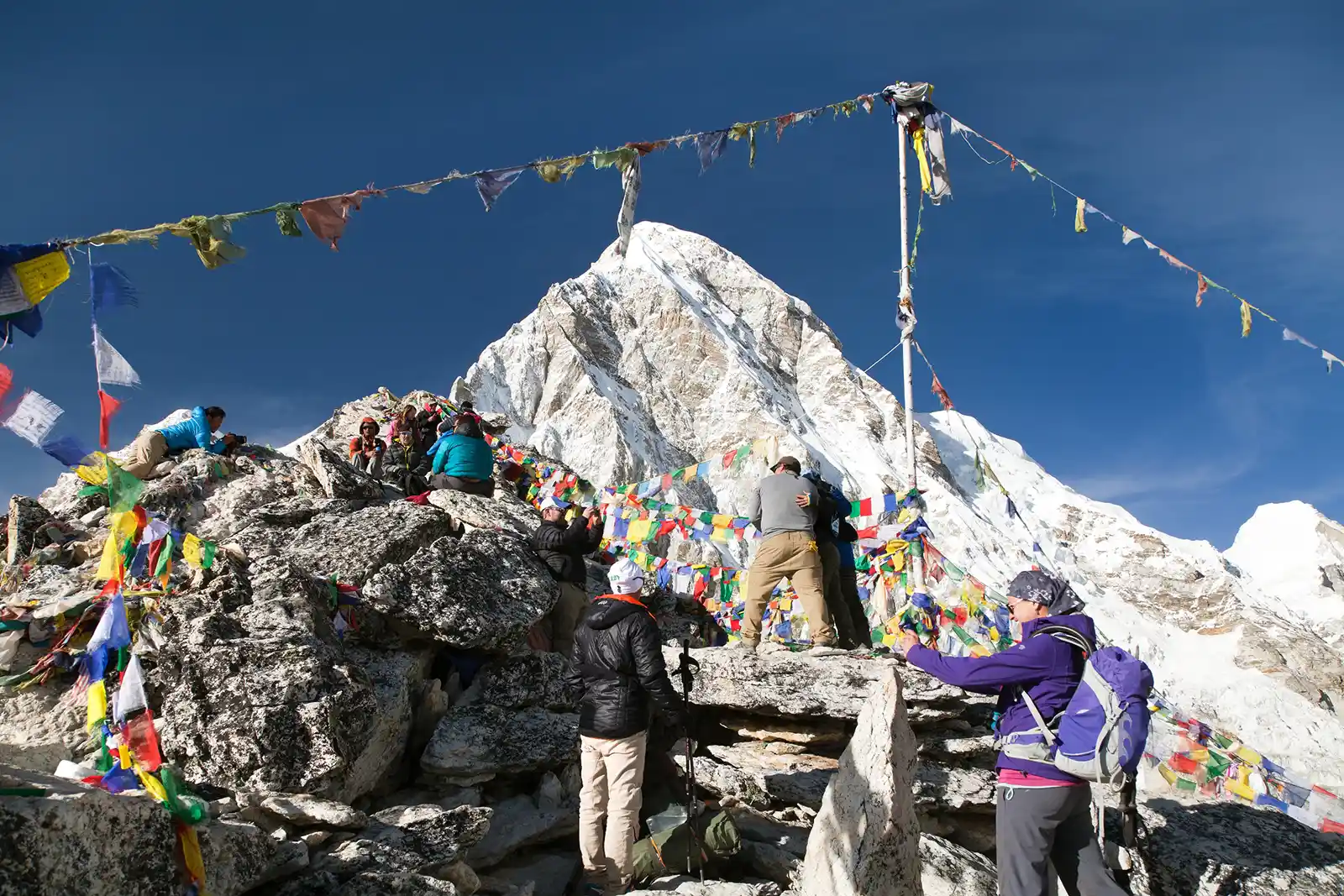
Develop Cardiovascular Endurance
Aerobic Training: Engage in regular aerobic activities like running, cycling, or swimming to boost heart and lung capacity, which is vital for high-altitude adaptation.
Consistent Routine: Commit to 30 minutes of moderate to intense cardiovascular training three to five times a week, progressively intensifying the workouts to enhance endurance.
Build Muscle Strength
Leg Strength: Work on your leg muscles with exercises such as squats, lunges, and leg presses, essential for supporting prolonged trekking on challenging terrains.
Back and Core Training: Boost your back and core strength through planks, deadlifts, and rowing, which are fundamental for maintaining balance and preventing injuries.
Integrated Workouts: Execute full-body strength training routines to develop comprehensive muscle endurance and capability.
Increase Trekking-Specific Stamina
Weighted Walks: Perform hiking or long walks carrying a weighted backpack to replicate trekking conditions, gradually increasing the weight to what you will carry on the actual trek.
Terrain Simulation: Train on diverse terrains, especially hills and uneven paths, to prepare your muscles and joints for the demanding trek trails.
Endurance Hikes: Undertake extended walks or hikes, slowly lengthening the distance and elevation to foster stamina.
Engage in Flexibility and Recovery
Stretching: Incorporate regular stretching to keep muscles flexible, avoiding stiffness and injuries, with dynamic stretching before and static stretching after exercises.
Recovery Practices: Adopt rest days, ensure ample sleep, and practice recovery methods like massage or yoga to promote bodily healing and strengthening.
Altitude Training
Pre-trek High-altitude Exposure: If feasible, acclimatize your body to high altitudes before the trek, utilizing altitude training masks or visiting high-altitude areas to adjust to reduced oxygen levels.
Nutrition and Hydration
Balanced Diet: Maintain a diet rich in carbohydrates, proteins, and fats to energize your training and aid in muscle recovery.
Hydrate Adequately: Elevate your water consumption during training to meet the hydration demands of the trek and counteract altitude sickness.
By actively following these fitness guidelines through a detailed and persistent training regimen, you will significantly boost your physical preparation for the Everest Base Camp trek, making for a safer and more gratifying journey.
Required Trekking Permits for Everest Base Camp Trek
Khumbu Pasang Lhamu Rural Municipality Entrance Permit
Starting from October 1, 2018, the Khumbu Pasang Lhamu Rural Municipality introduced this permit, eliminating the need for the TIMS card. It’s mandatory to access all areas within ward no 5 of the municipality. The local government of Solukhumbu District directly administers and collects the fees for this permit, which is not available in Kathmandu.
Khumbu Pasang Lhamu Rural Municipality Entrance Permit Cost
For foreigners, the fee for the Khumbu Pasang Lhamu Rural Municipality Entrance Permit is 2,000 NRP (roughly US $20).
Where can you get this Everest Base Camp Trek Permit?
Although you cannot get this permit in Kathmandu, it’s available in Lukla for those flying there. Trekkers using the Jiri route or Salleri can secure it in Monjo.
Everest Base Camp Trek Permit – Sagarmatha National Park Permit
To enter Sagarmatha National Park, trekkers must obtain the Sagarmatha National Park permit, which is essential for navigating most of the Everest Region trails.
Sagarmatha National Park Entry Permit Cost – Everest Base Camp Permit Cost
The entry permit fee for Sagarmatha National Park is 3,000 NPR (about US $28) for foreigners and 1,500 NPR for SAARC nationals.
Where can you get this Everest Base Camp Trek Permit?
The Nepal Tourism Board Office on Pradarshani Marg, Kathmandu, issues this permit, or you can opt for a more convenient location in Monjo at the national park’s entry checkpoint.
Additional Permit for Jiri to Everest Base Camp Trek
For those embarking on the classical route to Everest Base Camp via Jiri, the Gaurishankar Conservation Area Project demands an additional permit, available through the Nepal Tourism Board in Kathmandu, costing NPR 3000 per person.
Required documents for Things To Know Before Planning for EBC Trek
To acquire the Sagarmatha National Park and Khumbu Pasang Lhamu Rural Municipality entry permits, you must present a copy of your passport and the respective entrance fees. For the Gaurishankar Conservation Area Project Entry Permit, filling out a form and providing two recent passport-sized photos are necessary.
Expert Guidance for the Everest Base Camp Trek
Venturing into the Everest Base Camp trek is an exhilarating journey that requires thorough planning and professional guidance to conquer the Himalayan challenges successfully.
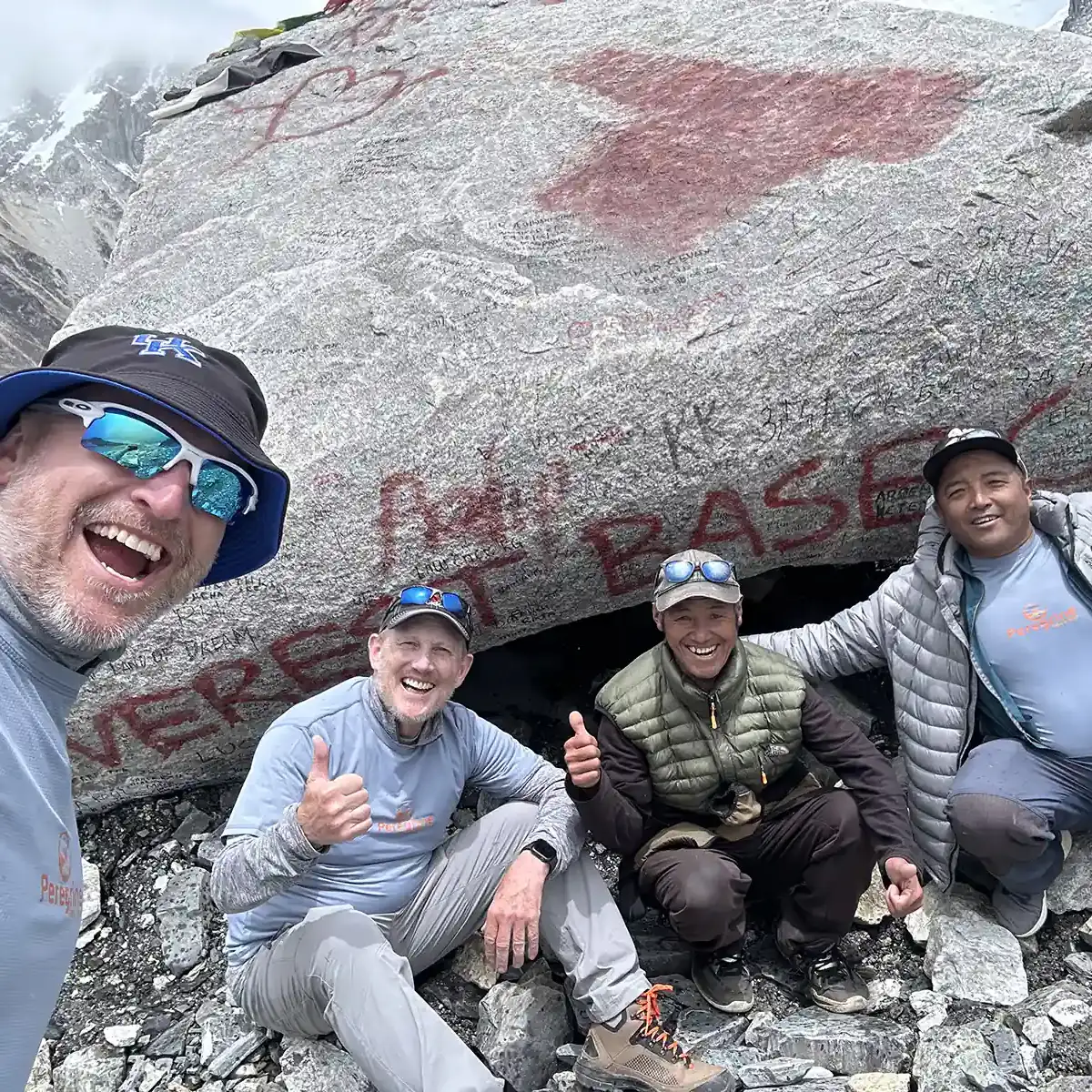
Specializing in navigating the complexities of this legendary trek, Peregrine Treks and Tours is dedicated to providing essential expert guidance for a safe and memorable expedition. Here’s how our experienced team and skilled guides prepare you meticulously for the Everest Base Camp trek:
Customized Itineraries: Our specialists design tailor-made itineraries that blend trekking challenges with sufficient acclimatization and opportunities for exploration, aiming to enhance your Himalayan adventure to the fullest.
Expertise in Altitude: Our guides possess in-depth knowledge of high-altitude trekking, vigilantly monitoring your well-being, advising on acclimatization strategies, and addressing altitude sickness symptoms with professional insight.
Cultural Insights and Local Knowledge: Our guides, armed with extensive local knowledge, enrich your trek with insights into the vibrant culture and traditions of the Everest region, offering more than just guidance on the trails but a deep cultural dive into the heart of the Himalayas.
Safety as a Priority: We hold your safety paramount. Our guides, trained in first aid, emergency protocols, and risk assessment, ensure your trek is as safe as possible and ready to tackle any challenges that the Everest Base Camp trek might present.
Seamless Logistics Handling: The logistics of the Everest Base Camp trek are complex, but our team expertly manages all aspects, including permits, lodging, and transport, letting you immerse fully in the adventure that lies ahead.
Tailored Support: Our guides recognize the unique nature of every trekker, offering personalized support catered to your individual fitness levels, preferences, and trekking ambitions, ensuring a supportive and confident trekking experience.
Commitment to Environmental Conservation: Peregrine Treks and Tours is dedicated to sustainable and responsible trekking practices, encouraging all trekkers to minimize environmental impact and help preserve the pristine nature of the Himalayas.
Ongoing Guide Training and Certification: We continuously train and certify our guides at Peregrine Treks and Tours, ensuring they can manage diverse scenarios and enhance the safety and enjoyment of your trek.
Effective Communication Strategies: Clear, effective communication is crucial in the Himalayas. Our guides keep you informed about trail conditions, weather forecasts, and itinerary changes, ensuring you remain well-advised throughout your journey.
Engaging With Local Communities: Peregrine Treks and Tours is deeply committed to supporting the Himalayan communities. Our guides facilitate respectful and enriching interactions between trekkers and locals, fostering a positive impact.
Choosing Peregrine Treks and Tours means embarking on an adventure with a team committed to your enjoyment, comfort, and safety, turning the Everest Base Camp trek into an unforgettable experience amidst the highest peaks of the world.
Trekking Insurance for the Everest Base Camp Trek
Setting out on the Everest Base Camp Trek is an adventure of a lifetime, and securing the right trekking insurance is key to a safe and prepared journey. Peregrine Treks and Tours highlights the importance of comprehensive trekking insurance for your expedition:
High-Altitude Coverage: Ensure your trekking insurance policy includes high-altitude activities, especially for treks above 4,000 meters, like Everest Base Camp, to guarantee coverage in these elevations.
Medical Evacuation Services: Given Everest’s isolated terrain, your insurance must cover medical evacuation, including helicopter services, for emergency medical needs.
Emergency Medical Expenses: A good trekking insurance policy will cover emergency medical costs, such as hospital stays, doctor consultations, medication, and other necessary treatments.
Trip Cancellation and Interruption: Select insurance that compensates for the financial impact of unexpected trip cancellations or interruptions, ensuring you can reclaim expenses or postpone your adventure.
Acute Mountain Sickness Coverage: Check that your insurance includes treatment for altitude sickness and related evacuation costs, as Acute Mountain Sickness is a common risk on high-altitude treks.
Protection for Personal Items: Choose a policy that covers the loss or theft of personal effects, including valuable trekking equipment and electronics.
Travel Delay and Missed Connection Coverage: Since Himalayan travel can be unpredictable, ensure your insurance covers costs related to delays, missed connections, or extra accommodations needed due to unexpected changes.
Search and Rescue Operations: Confirm that your insurance policy encompasses search and rescue expenses, vital in emergency scenarios.
Coverage for Pre-Existing Conditions: Disclose any pre-existing health conditions when purchasing your insurance, and verify whether these are covered or excluded.
Duration of Coverage: Make sure your insurance duration aligns with your trek’s timeframe, covering all acclimatization and potential delay periods.
Adventure Sports Inclusion: As trekking falls under adventure sports, ensure your insurance explicitly covers such activities to prevent coverage gaps.
24/7 Emergency Support: Opt for a policy offering round-the-clock emergency assistance, providing constant support and guidance during your trek.
Essential Documentation: Carry your insurance policy, emergency contacts, and necessary paperwork on the trek, and inform your guide and team about your insurance specifics.
Peregrine Treks and Tours strongly advises securing comprehensive trekking insurance before setting off on the Everest Base Camp Trek. We prioritize your safety and assurance, underscoring the need for well-rounded insurance to protect you throughout your journey in the Himalayas.
Packing List for EBC Trek
Organizing your gear for the Everest Base Camp (EBC) trek means gearing up for diverse weather conditions and ensuring a secure, comfortable experience. Below is a comprehensive packing guide for the EBC trek:
Clothing
- Thermal Base Layers: Equip yourself with warm top and bottom layers.
- Trekking Shirts: Choose shirts that are light, airy, and dry quickly.
- Trekking Pants: Opt for sturdy, comfortable pants, ideally with detachable legs for adaptability.
- Insulating Mid-Layer: Consider packing fleece or wool sweaters or jackets for extra insulation.
- Outer Layer: Select a high-quality, breathable, waterproof, and windproof jacket and trousers.
- Down Jacket: Bring a reliable down jacket for cold nights and higher altitudes.
- Undergarments: Pack sufficient undergarments, including extras.
- Socks: Carry woolen or synthetic socks and thermal variants for the cold.
Footwear
- Trekking Boots: Ensure your boots are durable, waterproof, and well-fitted.
- Camp Shoes: Pack light shoes or sandals to relax at the tea houses.
Gear and Equipment
- Backpack: Use a 50-65 liter backpack for carrying by porters and a daypack for personal essentials.
- Sleeping Bag: Have a sleeping bag suited for -10°C or colder, with an additional liner if needed.
- Trekking Poles: Include adjustable, robust trekking poles.
- Headlamp: Bring a headlamp with spare batteries.
- Hydration Solutions: Keep water bottles or a hydration system to maintain fluid intake.
- Sunglasses: Protect your eyes with UV-blocking sunglasses.
- Sunscreen and Lip Balm: Use sunscreen and lip balm with high SPF for protection.
Personal Items
- Toiletries: Pack biodegradable soap, shampoo, toothbrush, toothpaste, and other hygiene essentials.
- Towel: Include a lightweight, fast-drying towel.
- First Aid Kit: Prepare a kit with altitude sickness meds, band-aids, painkillers, and personal prescriptions.
- Snacks: Stock up on high-energy snacks like energy bars and trail mix.
- Water Treatment: Bring water purification tablets or devices to ensure safe drinking water.
Documents and Money
- Passport: Carry your passport with the necessary visas or permits.
- Insurance: Keep a copy of your detailed travel insurance policy.
- Cash: Have enough local currency for incidental expenses and gratuities.
Miscellaneous
- Camera: Pack a camera with extra batteries or a power bank for charging.
- Writing Materials: Bring a notebook and pen for reflections and notes.
- Navigational Aids: Include maps and guidebooks for route and cultural information.
- Organizational Tools: Use plastic bags or packing cubes for orderly and dry storage of your belongings.
Things To Know Before Planning for EBC Trek should include Smart packing for the EBC trek, which involves preparing for all possible weather scenarios, focusing on versatile, lightweight items that fulfill multiple needs, and ensuring your journey is enjoyable and hassle-free.
